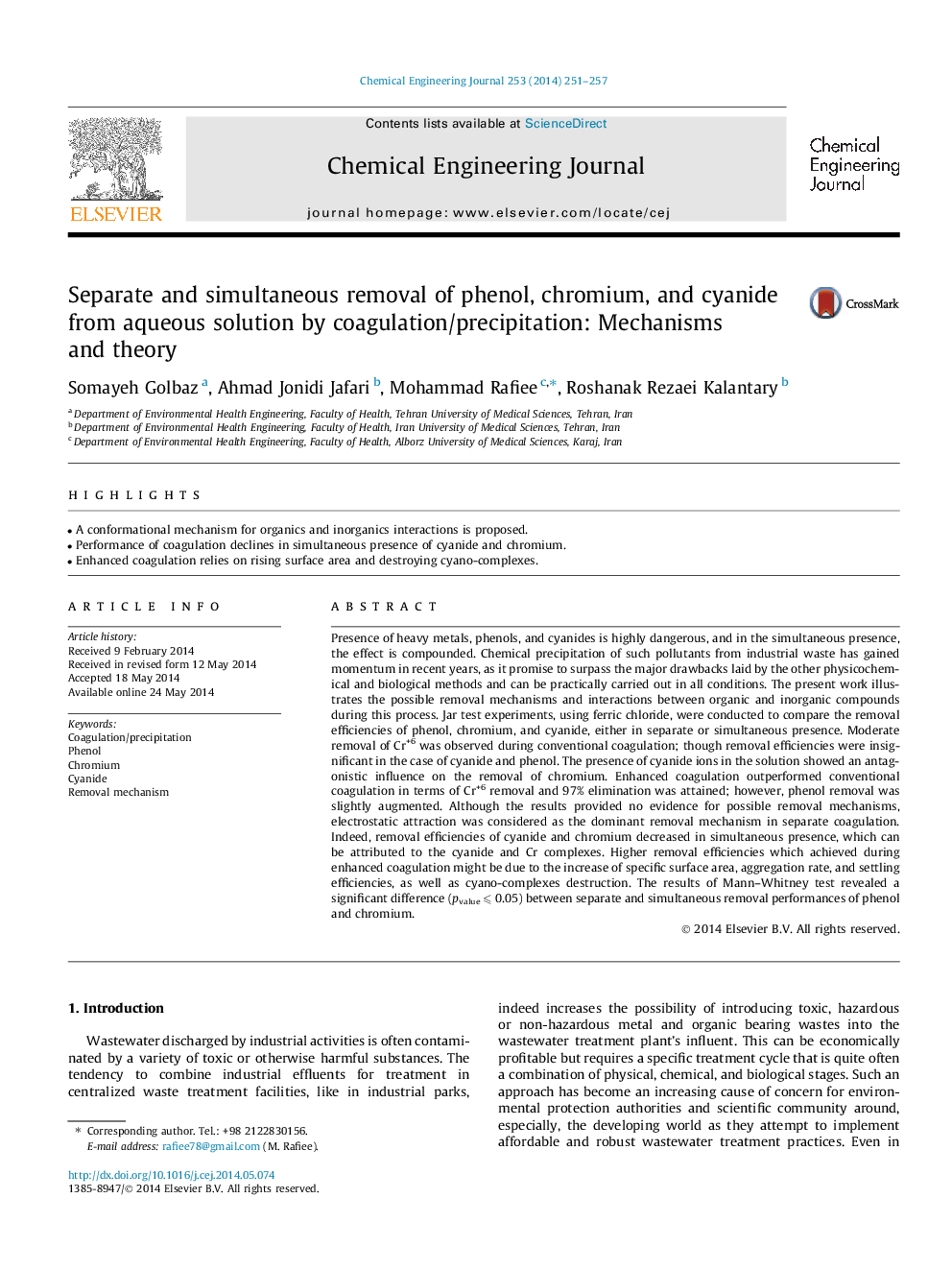| کد مقاله | کد نشریه | سال انتشار | مقاله انگلیسی | نسخه تمام متن |
|---|---|---|---|---|
| 147188 | 456387 | 2014 | 7 صفحه PDF | دانلود رایگان |
• A conformational mechanism for organics and inorganics interactions is proposed.
• Performance of coagulation declines in simultaneous presence of cyanide and chromium.
• Enhanced coagulation relies on rising surface area and destroying cyano-complexes.
Presence of heavy metals, phenols, and cyanides is highly dangerous, and in the simultaneous presence, the effect is compounded. Chemical precipitation of such pollutants from industrial waste has gained momentum in recent years, as it promise to surpass the major drawbacks laid by the other physicochemical and biological methods and can be practically carried out in all conditions. The present work illustrates the possible removal mechanisms and interactions between organic and inorganic compounds during this process. Jar test experiments, using ferric chloride, were conducted to compare the removal efficiencies of phenol, chromium, and cyanide, either in separate or simultaneous presence. Moderate removal of Cr+6 was observed during conventional coagulation; though removal efficiencies were insignificant in the case of cyanide and phenol. The presence of cyanide ions in the solution showed an antagonistic influence on the removal of chromium. Enhanced coagulation outperformed conventional coagulation in terms of Cr+6 removal and 97% elimination was attained; however, phenol removal was slightly augmented. Although the results provided no evidence for possible removal mechanisms, electrostatic attraction was considered as the dominant removal mechanism in separate coagulation. Indeed, removal efficiencies of cyanide and chromium decreased in simultaneous presence, which can be attributed to the cyanide and Cr complexes. Higher removal efficiencies which achieved during enhanced coagulation might be due to the increase of specific surface area, aggregation rate, and settling efficiencies, as well as cyano-complexes destruction. The results of Mann–Whitney test revealed a significant difference (pvalue ⩽ 0.05) between separate and simultaneous removal performances of phenol and chromium.
Journal: Chemical Engineering Journal - Volume 253, 1 October 2014, Pages 251–257
